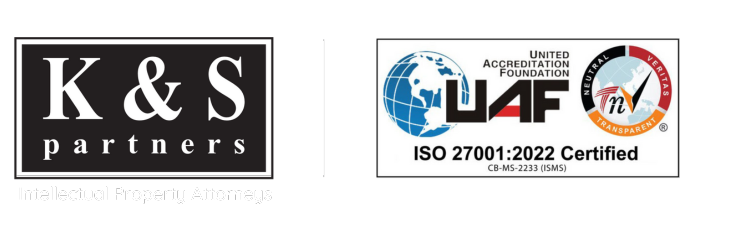The Madras High Court, this year, ruled on the much-awaited cases pertaining to interpretation of the scope of patentability of diagnostic methods patentability under the Indian Patents Act, 1970 (Act). Section 3(i) of the Act prohibits the patenting of diagnostic methods aimed at treating diseases in humans or animals to make them disease-free.
The two cases were appeals filed against rejection orders of the Controller of Patents (Controller) the matters of The Chinese University of Hong Kong v the Assistant Controller of Patents and Designs .
Case 1 – The Chinese University of Hong Kong vs. the Assistant Controller of Patents and Design (Indian patent application number 4863/CHENP/2012).
The University approached the Court against the Controller’s order rejecting their patent application for a method to detect foetal chromosomal abnormalities, deeming the method as a diagnostic one, and hence non-patentable under Section 3(i).
Section 3(i) specifically precludes from patentability:
any process for the medicinal, surgical, curative, prophylactic diagnostic, therapeutic or other treatment of human beings; or any process for a similar treatment of animals to render them free of disease or to increase their economic value or that of their products.
The University argued the following key arguments in support of their contention:
- In Vivo Application Requirement: The invention involved an in vitro (in the laboratory) analysis of fragments of nucleic acid molecules taken from a biological sample containing both foetal and maternal DNA. For a method to be classified as diagnostic in terms of Section 3(i), it should involve an in vivo application (within the living).
- Interpretation of Section 3(i): The lack of a comma between “prophylactic” and “diagnostic,” implies a restriction only to diagnostic methods used for disease prevention.
- Scope of Section 3(i): Only diagnostic methods for the treatment of human beings to make them “free of disease” fall within the scope of Section 3(i).
- Four-Step Diagnostic Method: A method is ‘diagnostic’ only if it includes four specific steps – data collection, comparison with standard values, identification of significant deviations, and linking these to a specific clinical condition (as recommended by the Enlarged Board of Appeal’s (EBoA) interpretation under the European Patent Convention (EPC)).
In response, the IPO presented the following arguments:
- The invention diagnosed foetal chromosomal abnormalities by identifying sequence imbalances in samples from the human body, making it diagnostic,
- Section 3(i) should be read broadly to include both in vitro (in the laboratory) and in vivo (within the living) diagnostic methods,
- The EboA’s opinion on the four-step diagnosis is not binding in Indian courts, and
- Any method involved in diagnosis qualifies as a diagnostic method under Section 3(i).
The Court analysed the interpretation of “diagnostic” within the context of Section 3(i), and passed judgement on the following:
- “Prophylactic Diagnostic”: The lack of a comma between “prophylactic” and “diagnostic” in Section 3(i) is a minor printing error and therefore, does not limit diagnostic methods to those treating humans to be disease-free.
- Diagnosis for Humans vs Animals: Section 3(i) has two distinct parts for human beings and animals. The animal-related provision mentions “any process for a similar treatment of animals” with three purposes of treatment: curing disease, increasing their economic value, or improving their products. However, the part applying to humans does not confine the word “diagnostic” to treatment of human beings to “render them free from disease”.
- In vivo and in vitro diagnostic: Neither the language of Section 3(i) nor of Article 27(3) of TRIPS, an international agreement, restricts diagnostic methods to in-vivo; international agreements such as EPC also do not impose any limitation or restriction on the scope of the expression “diagnostic methods”. Besides, the Manual of Patent office Practice and Procedure 2019 also does not limit the word “diagnostic” to in-vitro.
- On the four-step method requirement: As regards the EBoA’s interpretation on applying the four-step method, the phrase “practised on human body” is key and is missing from Section 3(i). Thus, it cannot be applied to determine the scope of diagnostic method in Indian context.
- Determining “Diagnostic”: Patent eligibility for “diagnostic” processes requires assessment of the claims in the context of the specification. If a person skilled in the art, such as a medical doctor, concludes from this that the process leads to a diagnosis, it is non-patentable. Additionally, the test’s label alone doesn’t dictate patentability. If the test is used to diagnose a disease, disorder or condition for treatment of human beings, then it is diagnostic and patent ineligible, regardless of the patient’s symptoms. Conversely, if testing is for research or quality control, then the process is not diagnostic and patent eligible.
Therefore, the Court held that the University’s patent application claimed a diagnostic method, thus non-patentable under Section 3(i).
Case 2 – The Chinese University of Hong Kong vs. the Assistant Controller of Patents and Design (Indian patent application number 4863/CHENP/2012)
This case claimed a method for determining the foetal fraction in a maternal sample. Similar to Case 1, the University challenged the Controller’s refusal decision, deeming the method as a diagnostic one, and hence non-patentable under Section 3(i).
While making similar arguments as in Case 1, the University further emphasized that their method in this case was a preliminary step in prenatal testing, primarily focusing on the process of identifying foetal fraction, an indicator for further testing, rather than diagnosing a condition. Thus, the method, non-diagnostic in nature, should not be classified as non-patentable under the purview of Section 3(i).
The Controller held the same arguments as made in Case 1. Additionally, an independent lawyer appearing as amicus curiae (friend of the court) in the matter, also provided his expert views on Section 3(i), stating that:
- Section 3(i) contains a drafting error and the phrase “of treatment of human beings” should be read as “for treatment of human beings” for making sense of the provision,
- Based on legislative history of the provision, diagnostics are not limited to in vivo methods,
- The exclusions such as Section 3(i) were introduced as a matter of practicality and not as a matter of public policy, and
- That the Technical Board of Appeal at the European Patent Office follows the four-method requirement of EboA with caution and only grants patents if the claimed invention does not unambiguously point to a clinical diagnosis.
The Court applied the same principles as discussed in Case 1. Further the Court held that the method in Case 2 involved determining the foetal fraction in a biological sample, a process not inherently identifying a disease or condition, and further testing would be required for such purpose. Therefore, adopting the balanced approach of interpretation of the term “diagnostic”, the Court allowed the appeal.
Key takeaways:
- Broad Interpretation of “Diagnostic” in Section 3(i): The section does not exclude in vitro diagnostic methods. The definitive test is to see if the diagnosis discloses disease or pathology for the treatment of human beings.
- Distinct Treatment for Humans and Animals: The first part of Section 3(i) applies to human beings and the second part to animals exclusively.
- Non-restriction to Disease-free Diagnostic Methods: A diagnostic method need not render human beings free of disease to be non-patentable. If the method discloses disease or pathology for treatment, the bar of Section 3(i) shall apply.
- EboA’s Method Not Mandatory: The EboA’s four-step process for determining a diagnostic method is not universally applicable.
- Individual Assessment of “Diagnostic” Nature: Each patent application must be assessed individually to see if it leads to a diagnosis. If a skilled professional like a doctor determines it results in a diagnosis, it’s non-patentable. However, if it’s for research or quality control without leading to a diagnosis, it’s patent eligible
As a parting remark, the Court observed that given the recent patent approvals in favour of in vitro processes and technological advancements made in diagnosis, especially with genomic tools, the scope of the expression “diagnostic” in Section 3(i) might need to be restricted to in vivo processes. This change can be balanced by introducing compulsory licensing legislations.
The Court’s decisions in these cases set significant precedents for future patent applications in the biotechnology and biomedical diagnostics sectors. The rulings suggest that legislative amendments might be required to refine the scope of “diagnostic” in Section 3(i), potentially restricting its scope to in vivo processes.
ABOUT THE AUTHOR

Kapil Kumar
Kapil Kumar is a Senior Associate with K&S Partners and has over 12 years of experience in the domains of computer sciences, electronics and design.

Sangeeta Rane
Sangeeta Rane is a manager with K&S Partners and has over 10 years of experience in content strategy and social media domains.

